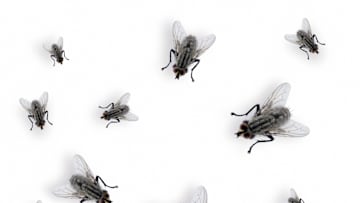
Interactive Cicada Map Shows Where You Can See (and Hear) Brood XIV This Spring
Use this map from the University of Connecticut to check if 17-year periodical cicadas will appear in your neighborhood soon.


Use this map from the University of Connecticut to check if 17-year periodical cicadas will appear in your neighborhood soon.

The Hawaiian caterpillar adorns itself in dead bug parts—and its gruesome habits might be key to its survival in spider webs.

Flies aren’t just decomposers—they’re also pollinators and pest predators. Researchers shows it’s time to appreciate these misunderstood insects.
The web of a Darwin’s bark spider can span 82 feet.
Learn more about how common house flies eat (and poop), plus what’s really going on when one of them ends up in your dinner.
Shopping secondhand? Learn how to avoid common pests like bed bugs and clothes moths during your next thrift store haul.
From the luna moth to the Madagascan sunset moth, these species rival the most stunning butterflies.
These creatures don't live in Middle-earth—but they sound like they could.
See if you can spot the names of these common (and not so common) terms for animal apprehension.
Bathynomus vaderi is a supergiant isopod that can grow 12.7 inches in length.
Meet the insect with an exoskeleton so dark it absorbs almost all light.
The bloodsucking hitchhikers have good reason to scoff at insecticides—they’re freakishly resistant to them.
Conservationists warn that the monarch could die out by the end of the century unless action is taken.
Research (and lots of dry-heaving) has revealed why the flower reeks of weeks-old road kill.
Three historic cemeteries, designed as refuges of the dead, are bringing their landscapes back to life for native plants and animals.
A new study on tarantulas reveals surprising insights into their relationship with army ants.
The solitary bee population is declining—here’s what you can do to help.
Making a beeline for the buffet table? You’re buying into some bee stereotypes.
Air pollution is making it hard for bees to pollinate flowers.
Not everyone gives directions the way you do—in fact, the way people tell others how to get where they want to go can vary by city, town, and culture. Some of these directional systems might just change how you navigate the world.
Cricket chirps can reach 100 decibels. So why do we use them as a byword for ‘silence’?
Goats have accents, hippos sweat something that looks like blood, and mosquitoes love feet. In the latest episode of The List Show, host Erin McCarthy dives into 28 animal facts that are sure to make you go "WTF?"
All locusts are grasshoppers, but not all grasshoppers are locusts.
The biggest, fastest, strongest animals in the world.